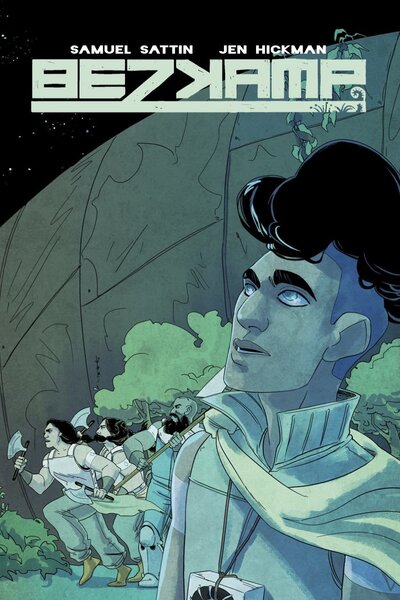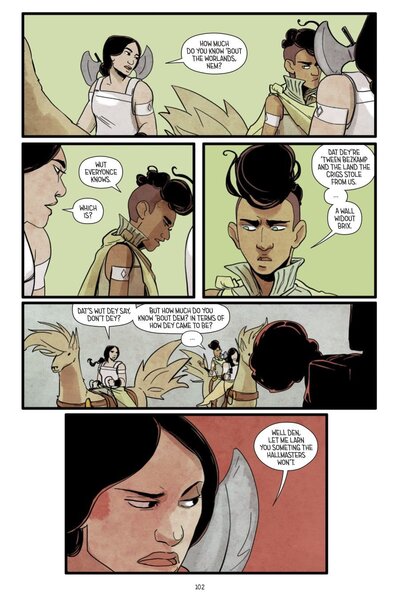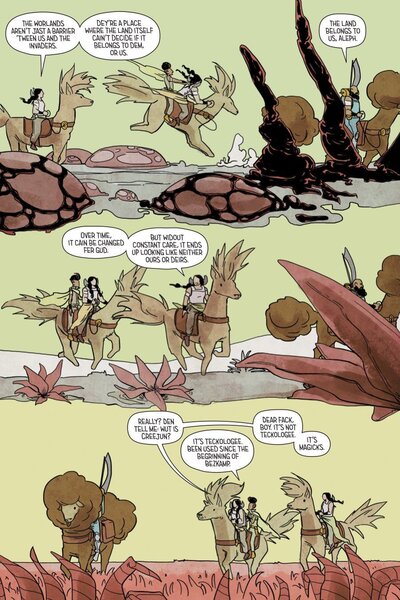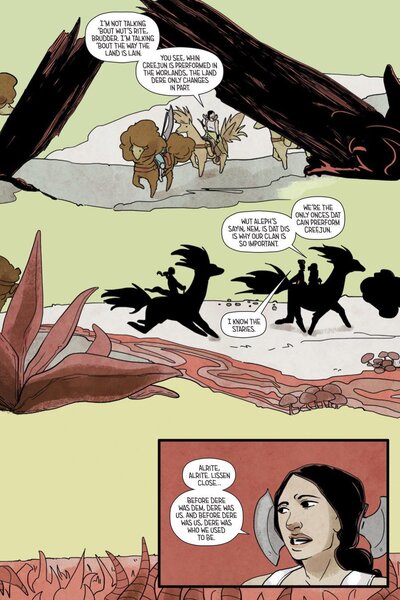Create a free profile to get unlimited access to exclusive videos, sweepstakes, and more!
Indie Comics Spotlight: BezKamp's creators built a world that's 'Aliens meets The Little Mermaid'
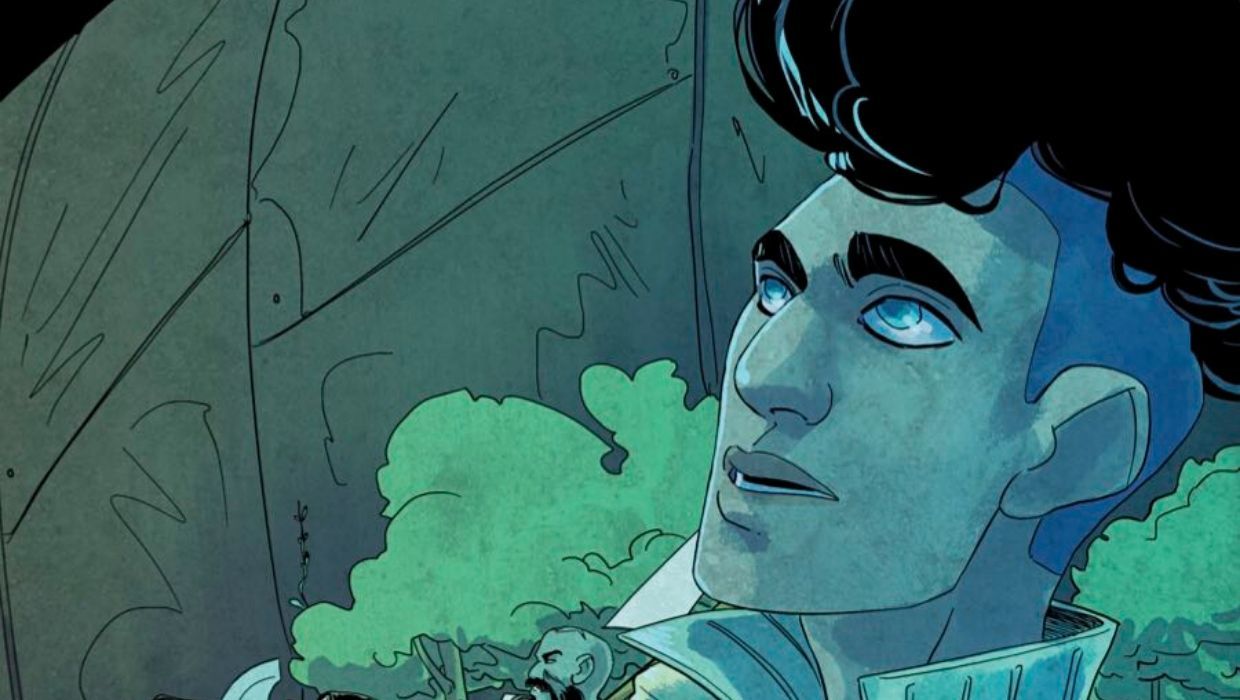
Samuel Sattin (Glint, Legend) is known for his in-depth worldbuilding and story arcs. Together with illustrator Jen Hickman (Jem and the Holograms, Moth and Whisper), they've created a new fantasy graphic novel called BezKamp, Hickman's first project with Lion Forge and Sattin's second (although this is his first with the Roar imprint).
BezKamp, based on the faraway planet of Klassu, exists in a future where a small human enclave has terraformed a portion of the planet to survive. Guided by ritual and secrecy, the pastoral society reveres tradition but rejects technology as a means of survival. Nem, a curious teenager, is looked upon by his clan as weak because he rejects the warrior lifestyle in favor of more intellectual pursuits, preferring to explore the world outside the relative safety of the camp's walls. This type of thinking is dangerous in this society and is one reason why his mother left when he was young.
Although this 256-page YA fantasy takes place in another universe, Sattin and Hickman's characterization of BezKamp and Nem's place within it as a catalyst for change parallels our world. SYFY WIRE spoke to the creators about their process, where they found inspiration, and why Sattin's agent describes the book as "Aliens meets The Little Mermaid."
What inspired the world of BezKamp?
Sattin: I would be a horrible, no-good liar if I didn't say that this book takes inspiration from Nausicaä of the Valley of the Wind. Nausicaä is one of my favorite series, and I recommend everyone read it. [I was also influenced by] a weird image I had of a large man with a device he thought was magical, converting toxic land to something he could survive on. From there, the story developed. My agent jokingly said the pitch could be summed up as "Aliens meets The Little Mermaid."
Hickman: I found visual inspiration in the mood of the original Star Trek series and Nausicaä [as well].
Why did you make a choice to have the residents of BezKamp speak in a particular dialect?
Sattin: I really like language, how it reads and how it sounds. What I really wanted to do was kind of impossible. I wanted to see how language would break down after hundreds of years without ways to record and standardize it. I went through this loony process of wondering how words would be affected by not only years of being unable to maintain standardized grammar, but doing so when on an alien planet. And with a society that reuses old technology, and relies on certain staple crops, religious beliefs, and antiquated laws to survive.
I could nerd out about BezKamp's language for days, but instead of doing that I'll just say that copyediting this book was hell for our dear editors, and I'm forever indebted to them.
There's some extensive worldbuilding going on here. What was the collaboration process like?
Hickman: Sam had a pretty concrete idea of how Klassu and BezKamp function, so taking that and finding visual ways to show them was a fun challenge.
I think my favorite example of that collaboration was the clans in BezKamp. Sam had described a society with different castes, and I thought it'd be good to separate them visually. I started with cloth armbands. The waryors' could be red, curers could be blue, and then perhaps a symbol on the cloth to go with the color-coding: Diamond for "waryor," circle for "curer," and so on.
[But] I quickly decided the armbands had too many connotations I didn't want, and Sam agreed, and I also realized that it would be a much more definitive statement on how much the clans meant if the clan-markers were tattooed onto people's skin. So the first time we see the people of BezKamp, it's easy for readers to quickly learn about the clans without Sam having to call that piece of worldbuilding out explicitly.
Nem is continuously told he doesn't have "fyre" in him. He's also drawn in an androgynous way. Were you commenting on society's concepts of masculinity?
Sattin: What I see as one of the many troubles with stratified societies is that they attempt to wire gender expressions along with fixed maxims. In this book, God is female-identified to BezKamp's citizens. Sin and Aleph, Nem's aunts, are well regarded as "waryors," and can expect to rival Nem's father, Migal, in combat. But still, Nem's real character, his mannerisms, the notion that his family tells him he has no "fyre ...," all of these things resonate with us, as readers, in a particular way. The world over, we often conflate ideal masculinity with brute strength.
Nem does not identify with those ideals, and so one of the things I thought about while writing him was whether he'd make some people think twice about what we traditionally associate with male and female. Like BezKamp, we're a very militaristic society. I like to think about what happens if you not only decide to turn away from warrior culture, but simply have no desire to dominate others.
Does that make you "less of a man"? Absolutely not. But I think people should ask themselves why that question is posed to begin with.
Hickman: The book, on some tertiary level, is having a conversation about masculinity in our society. Nem not fitting into his society as a "waryor" is a story I could tell visually by designing him at odds with the rest of his family — his dad and aunts are built like tanks — and in doing that, I am inviting in gendered expectations from the readers.
On the other hand, drawing androgynous characters comes extremely easily to me, so Nem's look was "on purpose" in that the design was one I could draw comfortably for the entire length of the graphic novel.
Is this a battle between curiosity and fear? Or a conflict between the old ways and new?
Sattin: Both ... I'd say. I do think that fear-based societies discourage curiosity, and that curiosity, in general, is what leads to the breaking down of preconceived ideas, and can lead to growth. That builds into the battle between older and younger generations, since the old guard, after breaking the molds of their own predecessors, build up new ones that, in turn, new generations try to destroy. You can see this in the relationship between Nem and his father, Migal.
Nem cares about expression, about breaking molds and opening up very closed minds. His father, on the other hand, has existential fears about the world he helped create, since it is falling apart. My hope is that readers can see each side as valid, and how we might change the endless generational battle.
What is a theme or concept that was important to you when creating BezKamp?
Hickman: I kept coming back to the idea of presumed normalcy for the people of BezKamp, and for Janny as well, so as I was drawing I was very aware of (hopefully) creating a disconnect between what the characters experience as a normal human world and what the readers would see when they looked at BezKamp.
Sattin: What I consciously thought about while writing the book was about how we communicate with each other. Communication in BezKamp is about staying away from anything that directly challenges the static, accepted beliefs of the group. Inquiry can literally be punished with death.
So yes, there's definitely commentary here on the dangers of book banning and conservative education policies, but really, I'm more curious about how people try and convey ideas to each other, and why we so often come up short doing so.
